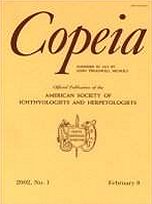The Red Hills salamander (Phaeognathus hubrichti), a large fossorial plethodontid endemic to south-central Alabama, was listed as federally threatened in 1976. To determine the seasonal and daily activity patterns of this species, I counted the number of salamanders present at burrow entrances, recorded the amount of time individual salamanders spent at entrances, and measured five abiotic variables to determine how they correlated with the number of salamanders at burrow entrances. Red Hills salamanders were present at burrow entrances all months of the year, displayed a unimodal daily activity pattern, and spent a mean of 12.3 continuous hours at an entrance each day. Regardless of season, time spent at an entrance remained relatively constant. Air temperature had the highest correlation with the number of salamanders present at entrances. Burrow entrances play a prominent role in the lives of these salamanders. When estimating population size for conservation efforts, surveys should be conducted at night and at multiple times and dates during the warmer months of the year because not all salamanders are present at entrances at any one time.
How to translate text using browser tools
1 August 2002
Activity Patterns of Red Hills Salamanders (Phaeognathus hubrichti) at Their Burrow Entrances
Kristin A. Bakkegard
ACCESS THE FULL ARTICLE





